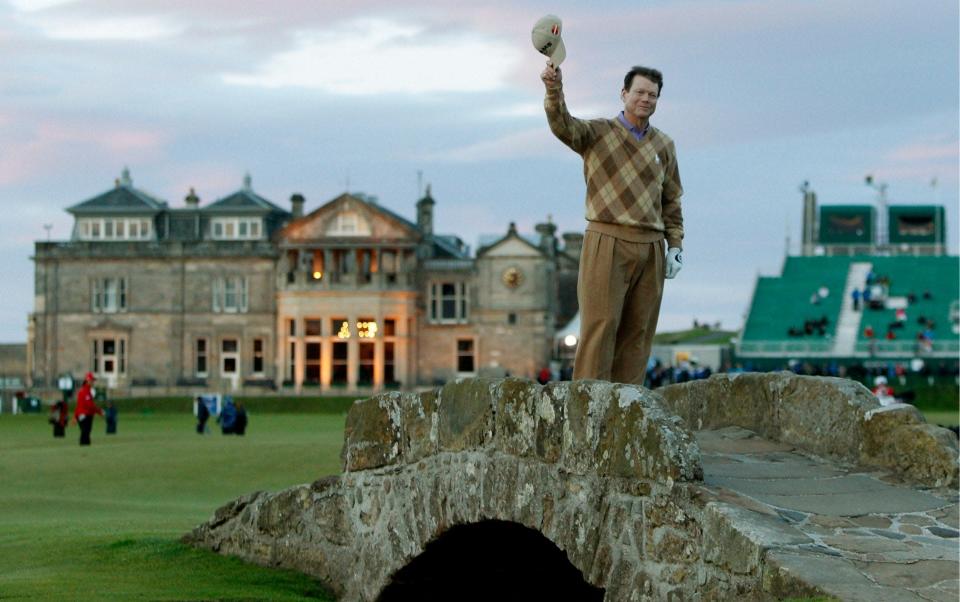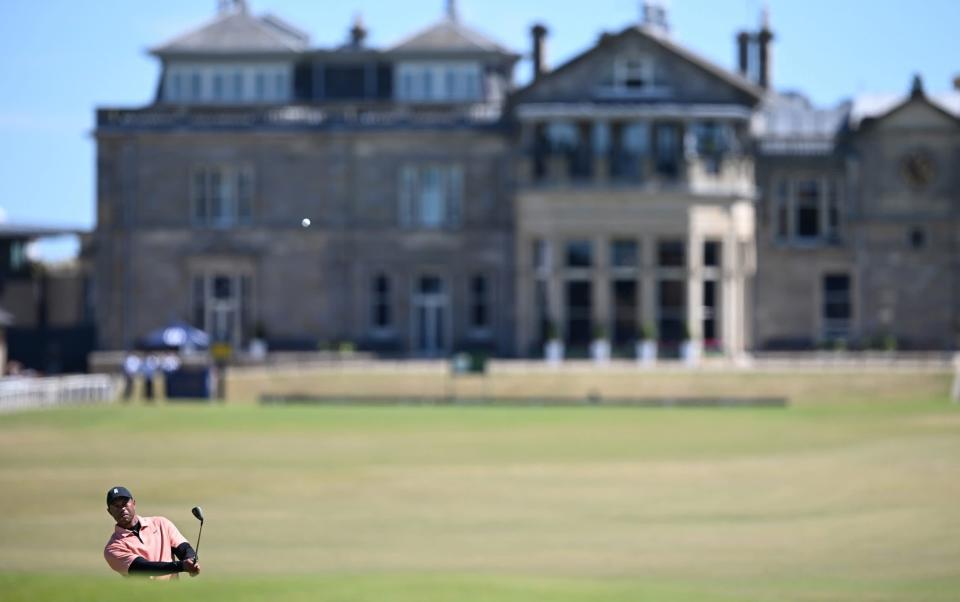
At the 1997 Dunhill Cup a prodigious young English golfer was asked if he rated the Old Course as the best course in the world and he replied that he was not even sure it was “in the top 100 courses in Fife”.
There was uproar. Lee Westwood might as well have marched into The Louvre and declared that the Mona Lisa deserved prominence only on the wall of the lavatory. He had committed golfing blasphemy.
“The outcry was extraordinary,” Westwood says. “A quarter of a century on and I’m still interrogated about that comment. What can I say, it was the bravado of youth and I’ve since come to love the Old Course. But it’s funny, because I’m far from being the only golfer whose first impressions of the place was not really getting it. That’s actually a very common reaction and if you think about it, is what makes the Old Course so special.”
No figure less than Tom Watson agrees and if any debutant at this week’s 150th Open Championship at St Andrews harbours a guilty, underwhelming sense, they should not feel too guilty but console themselves with the notion that the most adept links performer of the last 50 years was not an instant convert either. Far from it. Watson arrived there 44 years ago as expectant as any fanatic on a pilgrimage.
“I mean it’s the Home of Golf right?” Watson told Telegraph Sport. “The game was first played on the Old Course in the 1500s. It was designed by Mother Nature, the greatest golf architect of all. What other sport has such a spiritual connection with its past? It’s a living museum. You are walking across history, witnessing how golf evolved. If that doesn’t excite you then golf is not for you.


“But I have to be honest, I didn’t like St Andrews when I first played it in 1978. I actually had the lead going into the final round of that Open, but shot a 76 and Jack [Nicklaus] won. I really didn’t like it. It was difficult to negotiate and I remember walking through the gorse trying to get the lines off the tees, saying: ‘Where the hell are you supposed to hit it?’ All those bumps and humps. I found it confusing and not at all what I’d thought it would be.
“Yeah, I was enchanted by the town – pure golf – and humbled by standing on that first tee and thinking of all the golfers over hundreds of years who have played there and getting this incredible feeling of history, of being an insignificant piece of that history in a way, but also of belonging to a group of golfers who have played an Open there, going back to the 1800s.
“But as for the course itself I thought: ‘Am I missing something here? Why does everyone rave about it?’ That was the first time and hell, yeah, it grew on me. You get rewarded for getting to know it, just as you should do. You work out to drive over that branch of the gorse bush there, knowing exactly where the bunker is. It’s that wonderful dilemma of how much do I dare to bite off?”
Watson points to the wise words of famed course designer Tom Doak. “The Old Course would never receive the acclaim it has today if we hadn’t been told for eons how great it is,” Doak wrote in his Little Red Book of Golf Course Architecture.
“It is the great golf course that most players tend to dismiss as overrated after their first round – of course, that has something to do with its fame, too. But it seems to me that golfers can’t make out the strategies of the holes because the features are so difficult to see.”
“Subtleties” and “options”. Those are the two words most often used when experts explain its majesty. “When you’re young and a bit naive you go there and kind of bash it around trying to hit it everywhere, but it’s the kind of course that can lull you into a false sense of security,” Westwood says. “You see a lot of big, deep traps and a lot of big, high slopes and mounds on the greens and you think they are what defines it. But they don’t. They just suck you in.
“They say that if you hit it left all day then you’ll be out of trouble. However, you won’t score well then. If you want birdies you have to go up the right where the danger is. It’s a subtle course and needs some thinking about, working from the pin position and back to the tee. A pin can be just a few yards away from where it was the previous day but it could make you play it completely differently.
“And depending where you are in the tournament will dictate your choice. I remember on the 17th thinking I’ve got three options here. Hit a six-iron way left, a seven-iron short right or a five-iron straight at it. We rarely have options like that.”
The Road Hole 17th is perhaps the most famous hole in the world, certainly the most famous par four-and-a-half. In 1984, in his second Open at St Andrews, Watson was once more in contention for the Claret Jug, battling it out with Seve Ballesteros. As the Spaniard birdied the 18th, greeting his 12-footer with an iconic pumping of the fist, so Watson sliced his approach to the 17th, with his ball coming to rest close to the wall that runs alongside the green.
[embedded content]
“You know, Jack always says that ‘if you’re going to be a player people will remember, you have to win the Open at St Andrews’, but that’s kind of difficult to hear when you have five Claret Jugs, none of which came at the Old Course!” Watson said. “Of course I regret not winning there. 1984 was the shot I’d have back. It sums up the The Old Lady, I guess. Tempting you, scrambling your senses…
“I was on an upslope, couldn’t knock it down and I tried to hit it high in the air and land it on the putting surface. I should have heeded Jack’s advice, because he’d say to just hit it short of the green and get up and down. But it lured me in and I went for the heroic shot, trying to fit it into the gap. I pushed it 25 yards and that was that. Hey, the way I look at it is that I’m part of the history of that hole, of that back nine, because it was a great battle. There are so many great holes.”
Indeed, the 13th, 14th and 16th even rival the 17th, while the fourth encapsulates the risk-and-reward nature of this most natural of layouts. The one fear going into the Old Course’s 30th Open is that the advance of science could render its complexities obsolete. Billy Foster, Matt Fitzpatrick’s caddie, reckons in the right conditions, the big-hitters could drive six of the par fours and whispers of the first 59 in the 162 years of the majors grows louder. “You want a 15, 20 mile-an-hour wind blowing otherwise the players just murder it basically,” Westwood says.
Watson is not overly concerned, however. Have faith, he insists. “I go back to Mother Nature designing it – well, she also protects it,” he said. “She’ll help it out. After all, it must be one of her proudest creations.”
